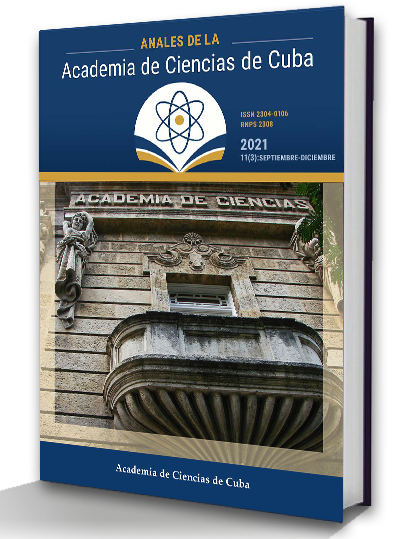Morphological and genetic diversity, and phytopathology of traditional Cuban cacao (Theobroma cacao L.)
Keywords:
traditional Cuban cacao, characterization, Phytophtora, Theobroma cacaoAbstract
Introduction: The objectives of the work were to characterize the morphological and genetic variability of traditional Cuban cacao to classify it in the traditional and genetic groups of the crop, To characterize morphologically and molecularly the species of Phytophthora, causing the black pod disease in Cuba.Methods: Traditional Cuban cacao was characterized with 33 qualitative morphological descriptors and DNA was amplified with the 15 cacao microsatellites standard for its genetic characterization. With the structure program, the population structure was determined and classified into the 10 genetic groups of cocoa. With these results, the plants were selected for the core collection by means of the algorithm of maximum genetic diversity. Phytophthora strains isolated from diseased fruits were studied, morphologically characterized under the microscope and DNA was extracted for phylogenetic analysis by amplifying ·-tubulin, TEF1-· and ITS.
Results: It was observed that Cuban plants have high morphological variability and low genetic variability. They were classified into seven genetic groups, but most constitute a mix between Criollo and Amelonado, which indicates that they belong to the traditional Trinitario group. Based on these results a core collection was selected. In addition, a group of Phytophthora strains isolated from diseased pods of Cuba were studied, combining morphological and molecular aspects to identify the species involved. Conclusions: Traditional Cuban cacao was classified as Trinitarian, with potential for genetic improvement, and the Phytophthora species that mainly affect cacao fruits are P. palmivora and P. tropicalis.
Downloads
Downloads
Published
How to Cite
Issue
Section
License
The journal Anales de la Academia de Ciencias de Cuba protects copyright, and operates with a Creative Commons License 4.0 (Creative Commons Attribution-NonCommercial License 4.0). By publishing in it, authors allow themselves to copy, reproduce, distribute, publicly communicate their work and generate derivative works, as long as the original author is cited and acknowledged. They do not allow, however, the use of the original work for commercial or lucrative purposes.
The authors authorize the publication of their writings, retaining the authorship rights, and assigning and transferring to the magazine all the rights protected by the intellectual property laws that govern in Cuba, which imply editing to disseminate the work.
Authors may establish additional agreements for the non-exclusive distribution of the version of the work published in the journal (for example, placing it in an institutional repository or publishing it in a book), with recognition of having been first published in this journal.
To learn more, see https://creativecommons.org






